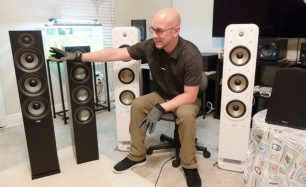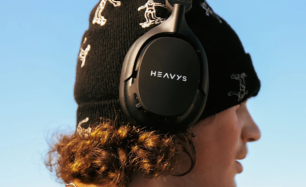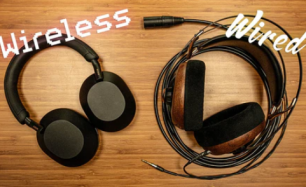The Science Behind Headphone Comfort: Materials and Design
Headphones aren’t just about sound—they’re something you wear. Whether you’re listening for five minutes or five hours, comfort matters just as much as audio quality. A great pair of headphones should feel like an extension of you—secure, lightweight, and barely noticeable. And behind that effortless comfort? A careful blend of science, materials, and design.
For women who use headphones daily—during work calls, gym sessions, commutes, or moments of calm—finding the right fit can be a game-changer. The wrong pair can lead to headaches, ear fatigue, or constant readjustment. The right pair? Total audio bliss.

1. Weight Distribution and Ergonomic Design
One of the most important factors in headphone comfort is how weight is distributed across your head and ears. Heavier headphones can cause neck strain or pressure on the crown of your head, especially during long sessions. That’s why ergonomic design is key—manufacturers now use curved headbands, memory foam padding, and adjustable frames to ensure the load is evenly balanced.
Over-ear headphones often include rotating ear cups that conform to the shape of your head, while in-ear and on-ear models are designed to sit comfortably within or on the ear without pinching or slipping. The best designs consider head size, ear shape, and natural movement to minimize discomfort over time.
2. Materials That Make a Difference
The materials used in headphone construction play a major role in both feel and durability.
- Ear pads: Memory foam covered in soft leather or fabric is often used to create a plush, breathable cushion around the ears. Premium models may even use gel-infused padding to reduce heat buildup.
- Headbands: Lightweight metals like aluminum or titanium are used for strength without bulk, while padding helps reduce pressure points.
- Cables and connectors: On wired models, flexible, tangle-resistant materials prevent snags and strain. Some wireless earbuds now include skin-friendly silicone or ergonomic wings for a secure, non-irritating fit.
Sweat-resistant coatings, hypoallergenic fabrics, and temperature-regulating materials are also becoming standard—especially in fitness-focused designs.

3. Fit and Seal: Finding Your Match
Comfort isn’t just about softness—it’s about the right fit. Over-ear headphones should fully enclose your ears without pressing on them, while in-ear options must sit snugly in the ear canal to stay in place and deliver proper sound.
Many in-ear headphones now come with multiple tip sizes (sometimes even in different materials like foam and silicone) so you can find a personalized fit. Poor fit not only causes discomfort but can also impact sound quality and noise isolation.
The ideal headphone fit creates a gentle, consistent seal—blocking external noise without causing pressure or fatigue.
4. Listening Habits and Lifestyle Matter
Your personal comfort needs may change depending on how you use your headphones. If you’re often on video calls, lightweight and breathable designs help reduce fatigue. For travel, padded over-ear models with noise cancellation may be more suitable. For workouts, stay-put, sweat-proof earbuds are essential.
Trying on headphones (when possible) or purchasing from brands with generous return policies can help you find the model that suits your daily routine.
Final Thoughts
The comfort of your headphones isn’t a luxury—it’s a science. From lightweight materials and ergonomic shapes to breathable fabrics and customizable fits, the best headphones are designed with your body and lifestyle in mind.
Because when comfort meets sound, you stop thinking about your headphones—and just enjoy the moment.








